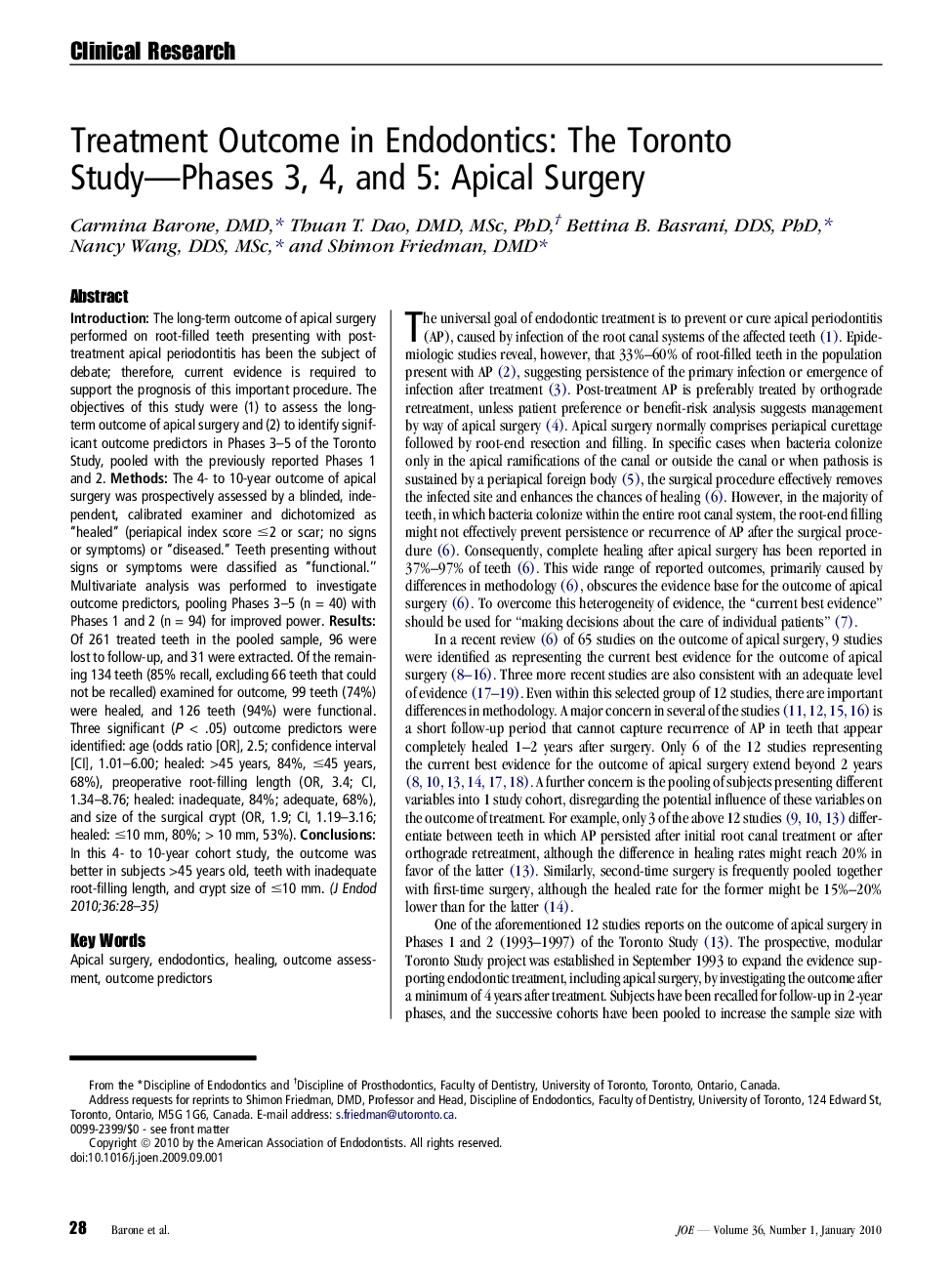| Article ID | Journal | Published Year | Pages | File Type |
|---|---|---|---|---|
| 3148120 | Journal of Endodontics | 2010 | 8 Pages |
IntroductionThe long-term outcome of apical surgery performed on root-filled teeth presenting with post-treatment apical periodontitis has been the subject of debate; therefore, current evidence is required to support the prognosis of this important procedure. The objectives of this study were (1) to assess the long-term outcome of apical surgery and (2) to identify significant outcome predictors in Phases 3–5 of the Toronto Study, pooled with the previously reported Phases 1 and 2.MethodsThe 4- to 10-year outcome of apical surgery was prospectively assessed by a blinded, independent, calibrated examiner and dichotomized as “healed” (periapical index score ≤2 or scar; no signs or symptoms) or “diseased.” Teeth presenting without signs or symptoms were classified as “functional.” Multivariate analysis was performed to investigate outcome predictors, pooling Phases 3–5 (n = 40) with Phases 1 and 2 (n = 94) for improved power.ResultsOf 261 treated teeth in the pooled sample, 96 were lost to follow-up, and 31 were extracted. Of the remaining 134 teeth (85% recall, excluding 66 teeth that could not be recalled) examined for outcome, 99 teeth (74%) were healed, and 126 teeth (94%) were functional. Three significant (P < .05) outcome predictors were identified: age (odds ratio [OR], 2.5; confidence interval [CI], 1.01–6.00; healed: >45 years, 84%, ≤45 years, 68%), preoperative root-filling length (OR, 3.4; CI, 1.34–8.76; healed: inadequate, 84%; adequate, 68%), and size of the surgical crypt (OR, 1.9; CI, 1.19–3.16; healed: ≤10 mm, 80%; > 10 mm, 53%).ConclusionsIn this 4- to 10-year cohort study, the outcome was better in subjects >45 years old, teeth with inadequate root-filling length, and crypt size of ≤10 mm.
